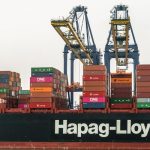With China’s tighter-than-usual supply of low-sulfur fuel oil expected to extend into December and as domestic refineries scale down production volumes, market players are likely to source more imports to replenish stockpiles for bunker markets, traders said
Earlier in the fourth quarter, Chinese oil companies hoped to raise LSFO imports, partly to compensate for reductions in domestic supplies, and to at least meet their term contract obligations with regular downstream buyers, but inflows were capped due to stronger cargo premiums, which significantly elevated procurement costs, traders said.
“The majors are importing [LSFO] cargoes in November and December too, otherwise there won’t be adequate stocks [for downstream supply] in January,” a China-based fuel oil trader said.
More arbitrage opportunities might present themselves if cargo premiums soften further, as the cash differential for Platts Singapore marine fuel 0.5%S cargo to the Mean of Platts Singapore marine fuel 0.5%S assessment most recently fell to a two-month low of $11.50/mt Nov. 29, down 95 cents/mt day on day, according to data from S&P Global Commodity Insights.
This LSFO cash differential averaged higher at $26.11/mt Nov. 1-29 from $16.73/mt across all of October.
Meanwhile, due to tighter stockpiles, the Platts Zhoushan-delivered marine fuel 0.5%S bunker premium over benchmark FOB Singapore Marine Fuel 0.5%S cargo values averaged $34.53/mt Nov. 1-29, doubling from the $16.83/mt across October, S&P Global data showed and was assessed at $57.93/mt Nov. 29, up $2.36/mt.
As of late November, traders said initial estimates for LSFO cargoes sourced from around Singapore bound for December arrival in China might hover around 300,000 mt, doubling November’s imports.
Amid the limited fuel oil bonded export quota for Q4 2023, China’s local refineries gradually lowered LSFO production to only 975,000 mt in October, the lowest since October 2021 when output was recorded at only 955,000 mt, according to local information provider JLC.
This meant that October’s domestic LSFO production fell 16.7% on the month, and declined 26.6% year on year, JLC data also showed.
Over the first 10 months of 2023, the country’s LSFO output declined 8% to 12.05 million mt, JLC’s data showed.
“Local majors will still need to scale up by expanding the bunker market, even if it means breaking even or sustaining slight losses for December,” a local trader said, highlighting China’s ambitions to grow Zhoushan port as Asia’s bunker hub, despite inventory limitations.
Bonded bunker fuel oil sales at the key North Asian bunker hub of Zhoushan tumbled 16.3% on the month to 549,300 mt in October, the second consecutive monthly decline, despite a 16.9% rise year on year, according to data compiled by S&P Global.
Oct fuel oil imports rise
China’s exports of both low and high-sulfur fuel oil slipped 5.4% month on month to 1.390 million mt in October, the lowest since April when it was at 1.363 million mt, according to the latest data from the General Administration of Customs.
This was despite a 19% increase year on year, GAC data also showed.
All barrels exported in October were classified under the customs warehouse trade route, suggesting that the volumes were sold as bonded bunker fuels at Chinese ports.
Meanwhile, fuel oil imports in October jumped 73.4% month on month to reach a four-month high of 1.811 million mt, up 33.7% on the year, according to data by GAC.
Of the total imports across October, volumes classified under the general trade route, which sources said were likely straight-run fuel oil feedstocks for China’s domestic refineries, rose 71% on the month to 648,700 mt, whereas fuel oil volumes imported under the customs warehouse route totaled 1.163 million mt, up 74.8% on the month, GAC data showed.
China’s fuel oil imports exceeded export volumes by 422,000 mt, for the first time since June.
The leading exporter Sinopec is likely to have its export quotas, at about 800,000 mt, transferred from LSFO to clean oil products in end-November, S&P Global reported.
As a result, the company’s LSFO export quota would fall to 6.35 million mt in 2023 with the swap, 22.7% below 8.21 million mt in 2022. China’s total LSFO export quota would also decline to 13.2 million mt, down 21.2% year on year, S&P Global data showed.
Sinopec’s LSFO export quota availability was estimated at about 600,000 mt for November-December, while PetroChina would only have 300,000 mt and CNOOC 100,000 mt, according to local information provider JLC.
Source: Hellenic Shipping News






